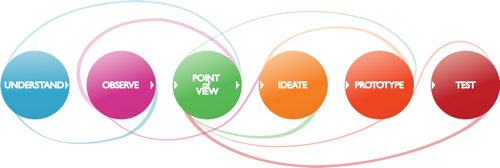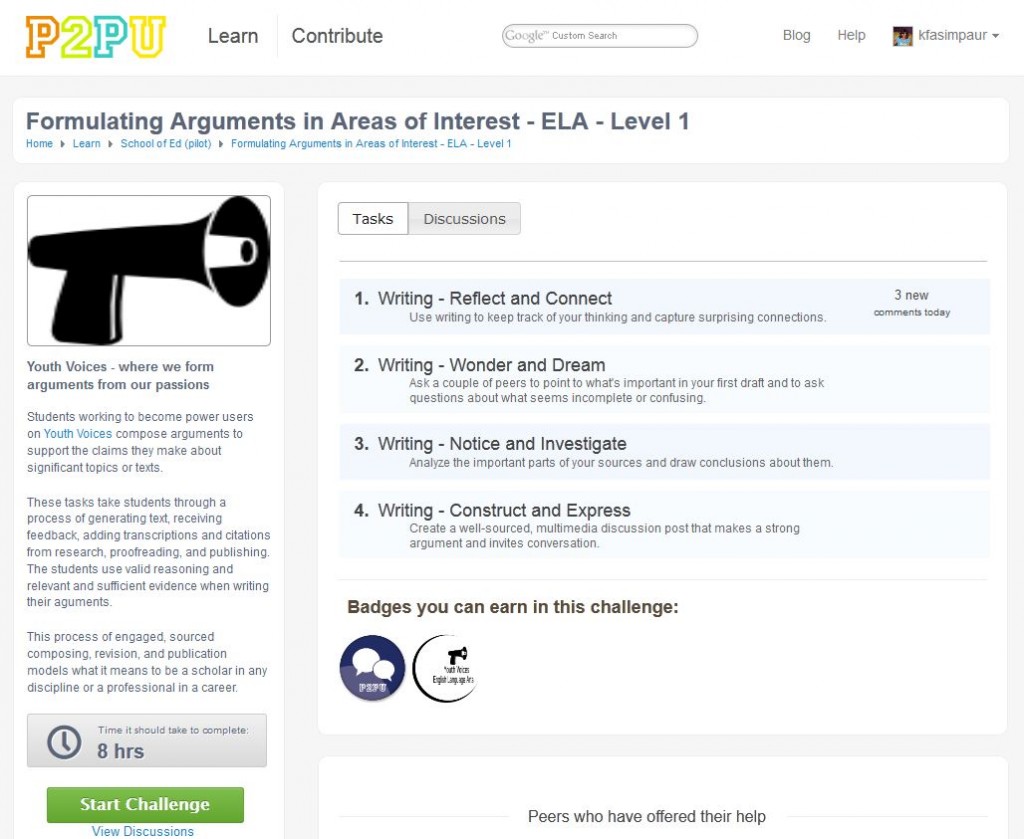I am a big believer in differentiated learning. Our students come in too many shapes and sizes to think that they can all find success on one learning path.
As a result, I am not a fan of rigid pacing or textbooks, both of which, I think, take a one-size-fits-all approach.
This month I am taking an IDEO course called “Design Thinking for Educators.” The basic idea of design thinking is to address ill-defined, messy problems through a process of defining needs, researching them further, brainstorming (ideation), prototyping, implementation, and iteration.
Key to design thinking are empathy, creativity, collaboration, experimentation, and iteration. It’s thinking out of the box for real-life, messy problems.

Credit: Stanford K-12 Lab, CC BY SA
Human learning is certainly a messy problem that calls for empathy and creativity, so it seems to me that this might be a useful way to look at curriculum or, more broadly, learning experiences:
- Look at the challenge. Gather information. Talk to the student, parents, teachers, and others to understand the unique needs. Observe. Empathize. Reflect.*
- Interpret the observations made to begin to define the needs of the learner.*
- Ideate. Brainstorm. Collaborate. Come up with as many possible ways address the needs as possible.*
- Take the ideas and experiment with them through rapid prototyping.*
- Try something out. Test the prototype. Gather data about what’s working. (Yeah, yeah, I know…)*
- Iterate and evolve over time. Human learning is messy. Things change, and the learning process needs to respond to these changes.*
* Throughout this process, get feedback and collaborate with others.
So this sounds like individualized education plans or personalized learning with a new design twist. This idea is not particularly new, but what might be different now is the advent of new technologies coupled with open educational resources as tools for achieving this vision.
Imagine having a personalized learning plan for each learner and the tools to realize it cost-effectively. How could we ever go back to pacing and textbooks after that?




